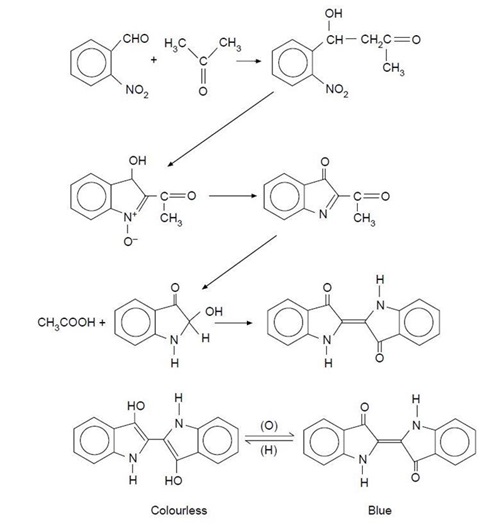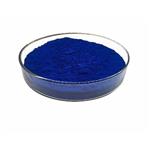Synthesis of Indigo Dye
Aug 1,2024
Indigo dye has been produced commercially for hundreds of years, but its history extends to pre-Roman Britain. This article will introduce a synthesis method of indigo dye.
2-Nitrobenzaldehyde dissolves in propanone to form a pale yellow solution. When sodium hydroxide solution is added, the solution darkens after a few seconds and a purple precipitate of indigo forms.
The synthesis is very simple and quick to perform, yet it is mechanistically complex, involving a series of condensations, disproportionations and oxidations. The sequence of reactions is given in the figure below, together with the structures of the two forms of indigo.

There is one unusual step which produces ethanoic acid and what appears to be a hydroxy-derivative of indoxyl prior to the final oxidation to form indigo (indigotin). It is worthwhile pointing out that it took Baeyer 14 years (from 1865 to 1879) to find a route for the original synthesis of indigo and even when he did, it took him another four years to deduce the correct formula (in 1883).
The indigo can be filtered off and then dissolved in an alkaline solution of sodium dithionite to form the colourless, soluble form (leucoindigo). A piece of cotton cloth dipped into this solution and then exposed to air produces the indigo-dyed fabric – this is the procedure used in vat dyeing.
- Related articles
- Related Qustion
- Indigo: physicochemical properties, production pathways and biological production Jan 15, 2024
Indigo is a dye derived from natural plants and can be produced through plant-based or microbial fermentation pathways, with genetic engineering offering improvements for sustainable production.
- Indigo: mechanism of action and applications in psoriasis treatment Aug 1, 2023
Indigo can treat psoriasis by regulating keratinocytes and inhibiting cell proliferation and differentiation. Combination therapy shows promise.
- Production Methods of Indigo Oct 30, 2019
Indigo, or indigotin, is a dyestuff originally extracted from the varieties of the indigo and woad plants. Indigo was known throughout the ancient world for its ability to color fabrics a deep blue.
Dexamethasone is a glucocorticosteroid used in the treatment of different inflammatory conditions related to allergic disorders, skin conditions and lupus, psoriasis, ulcerative colitis, arthritis and respiratory disorders.....
Nov 13,2024APIBenzoic acid belongs to the class of organic compounds known as benzoic acids. These are organic Compounds containing a benzene ring which bears at least one carboxyl group.....
Aug 1,2024APIIndigo
482-89-3You may like
- The Thioflavin T assay
Oct 31, 2024
- Is Rhodamine B safety?
May 29, 2024
- The introduction of p-Phenylenediamine
May 14, 2024









